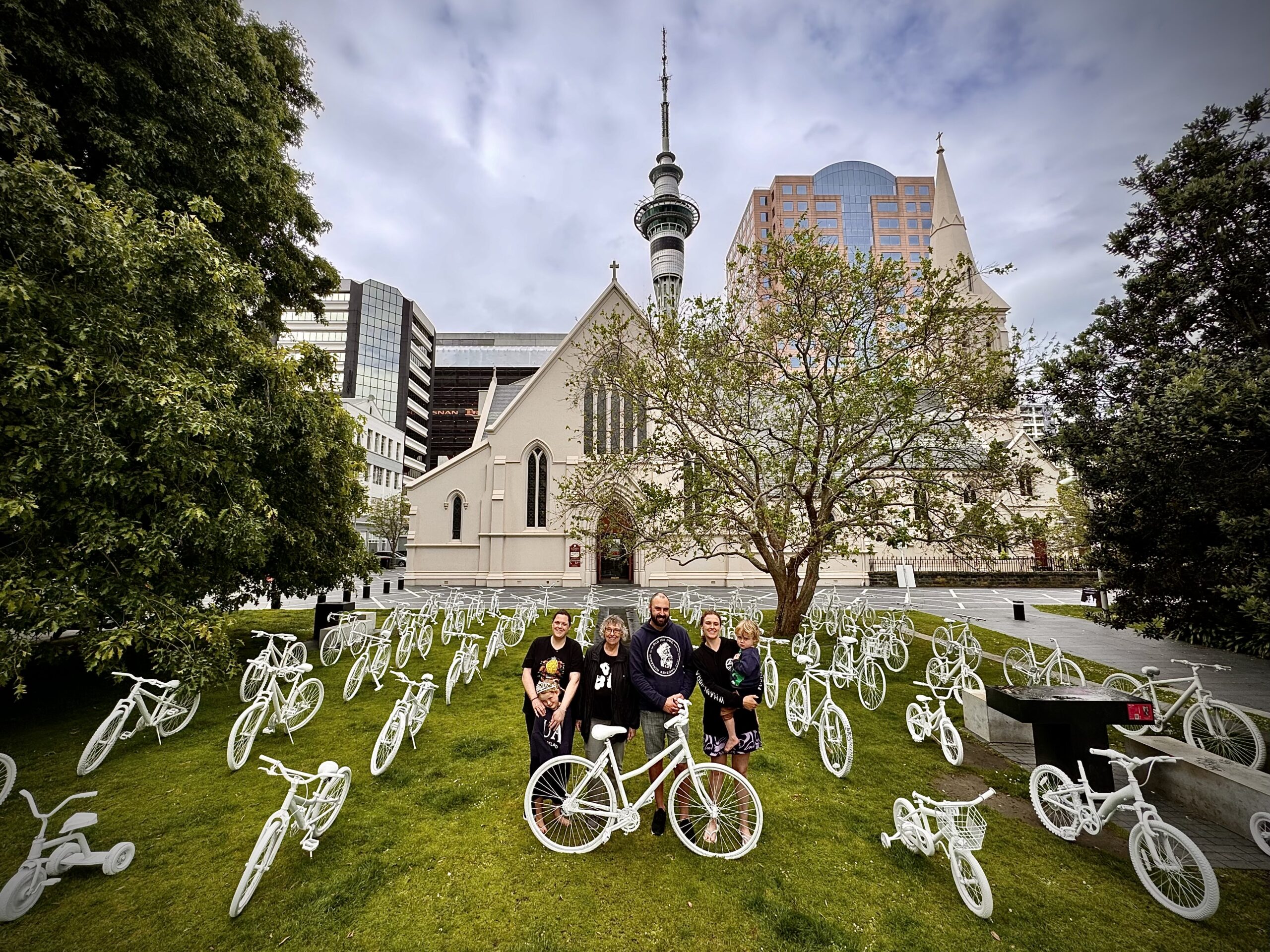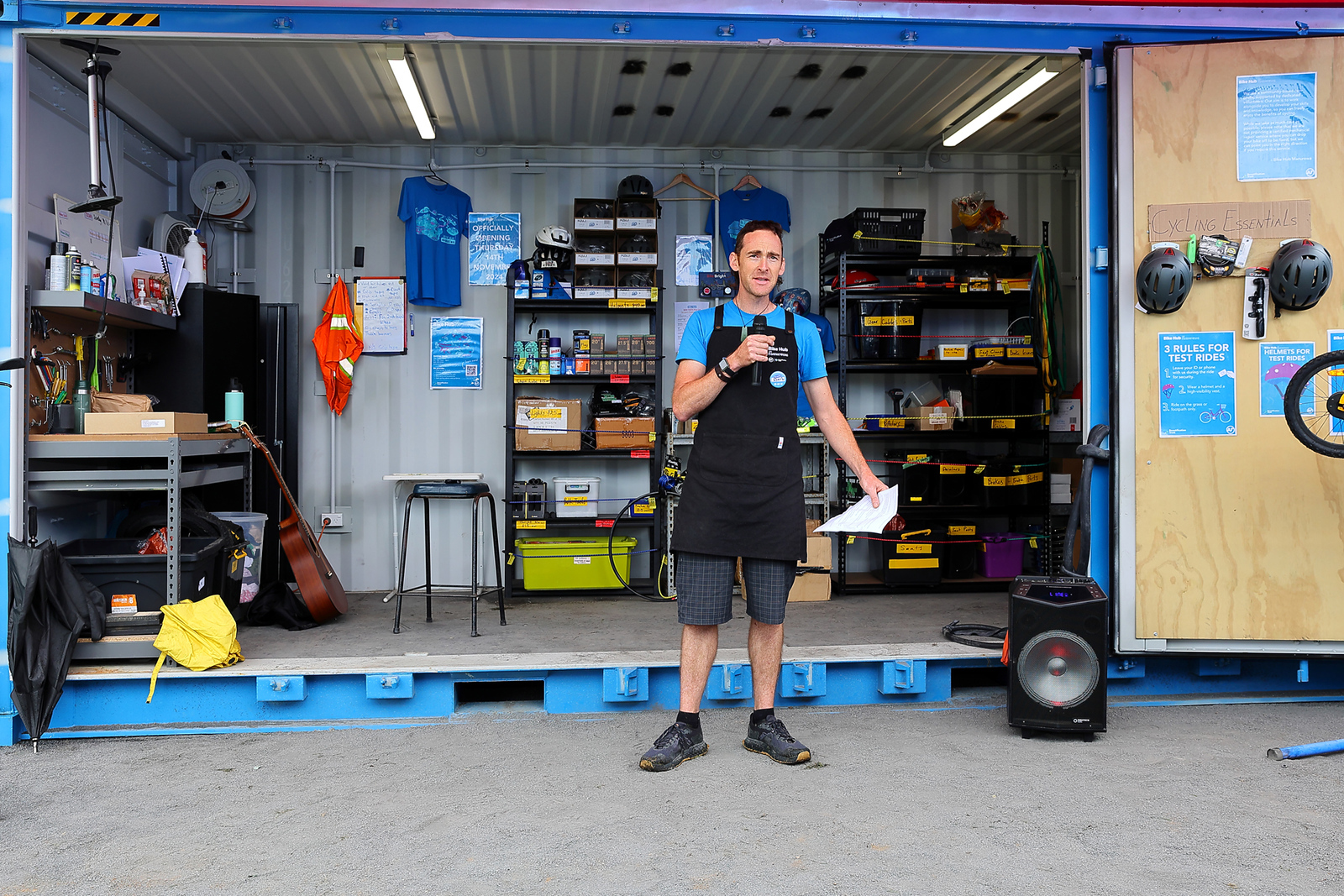If you frequently cycle along Tamaki Drive you might already have forgotten what we’ve gained as a result of the new-look Ngapipi Road intersection completed in July, and the Quay Street Cycleway extension which opened just last month.
A reminder, then. The Quay Street Cycleway, already one of the city’s most popular routes, was extended by 800 metres towards the east, adding a dedicated bi-directional, protected lane from Plumer Street to just short of The Strand. Further along the waterfront, the Ngapipi Road intersection – until recently one of the country’s top 10 crash black spots, got a $9million safety upgrade. It acquired traffic lights, signalised pedestrian/bike crossings (in anticipation of the connection with the Glen Innes path), some stretches of shared path and, at two points, short protected cycle lanes for riders approaching from the east and turning into Ngapipi Road.

Both the Quay Street section and the remodelled intersection are, with a few caveats, vast improvements on what went before (here’s some pretty hairy video footage of what riders had to contend with at Ngapipi Rd before the redesign.) And, in the case of the intersection upgrade especially, those improvements didn’t come easily. Bike Auckland has been campaigning for a safety upgrade at this spot since at least 2013, back when we were known as Cycle Action Auckland. It’s an example of how persistent advocacy does, over time, produce results.
https://www.instagram.com/p/BmtcaLIhzzA/?taken-by=bikeakl
Thing is, the job’s not done. For one thing, the intersection is still hazardous for riders heading into the city from the east. If you approach the intersection on-road and follow the cycle lane at the side of the road, you’re forced to merge with traffic on your right as you cross Ngapipi Road and head up Ngapipi bridge. The alternative is to take the shared path on the south side of Tamaki Drive, but that is both narrow and bumpy, a poor choice for roadies rolling through in groups at, say, 30 kmh. And there’s many hundreds of those roadies – and daily commuters – streaming through this intersection daily, especially early in the morning.
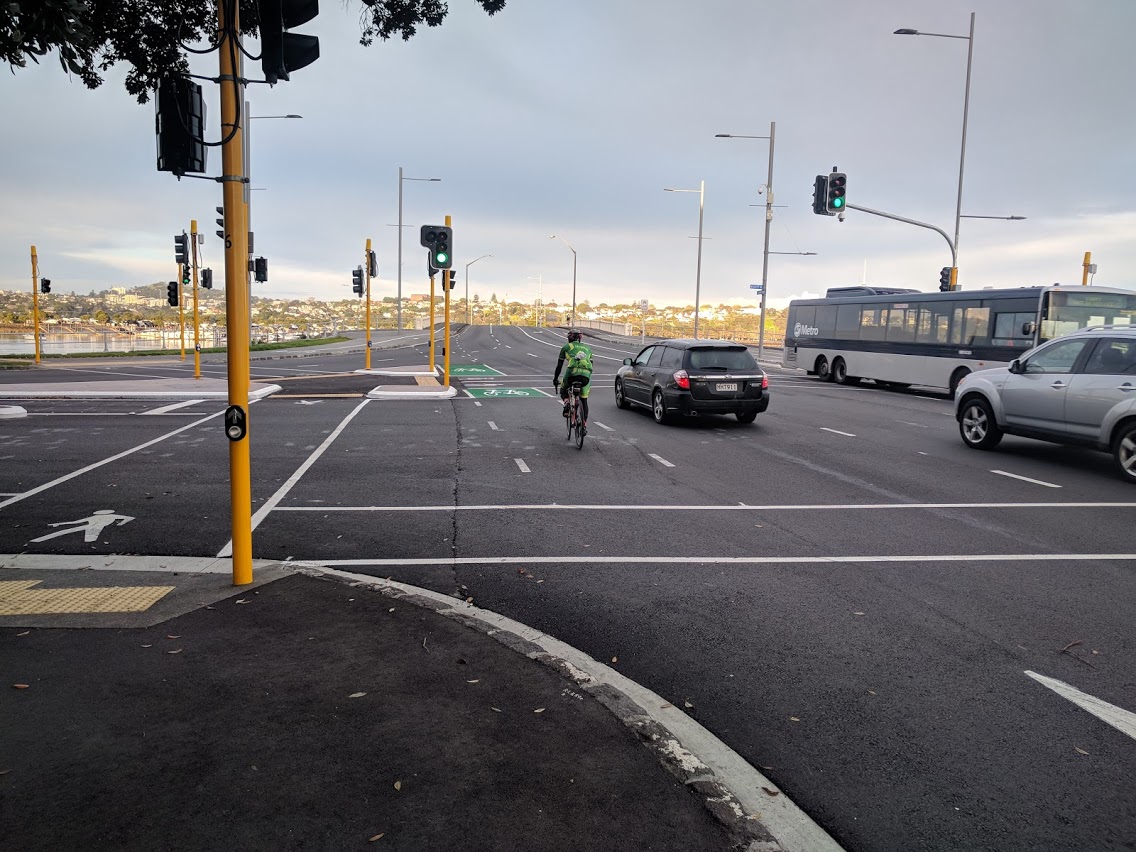
But wait, there’s more…
A solution, thankfully, is in the works. Both Quay Street and the intersection are part of an uber-plan, the last stages of which are being finalised right now. One of those stages, the addition of clip-ons to the Ngapipi bridge, will provide protected cycle lanes on both sides of the bridge and offer road riders a much safer entry to the western stretch of Tamaki Drive.
Here’s what we know about the next stages of the waterfront cycleway project:
- We reported back in May that plans for the section from the current end of the Quay Street cycleway to Solent Street have been upgraded. There will now be a separated cycleway along this entire section. The existing three-stage-crossing over the Solent Street intersection will, thankfully, be replaced with a single signalised crossing. We understand AT is still discussing that intersection and the approaches to it with Ports of Auckland and trucking industry representatives. We’ll keep you posted on this.
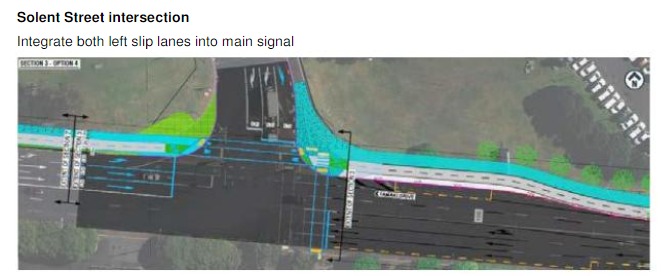
- Detailed design is under way for the Tamaki Drive main section, from Solent Street to Ngapipi Road, and the project is expected go out for tender at the end of this year with construction next year. This section will provide a protected on-road two-way cycleway on the northern side of Tamaki Drive for the entire distance. Think: Nelson Street north of the Lightpath, but with sea views and prettier trees.
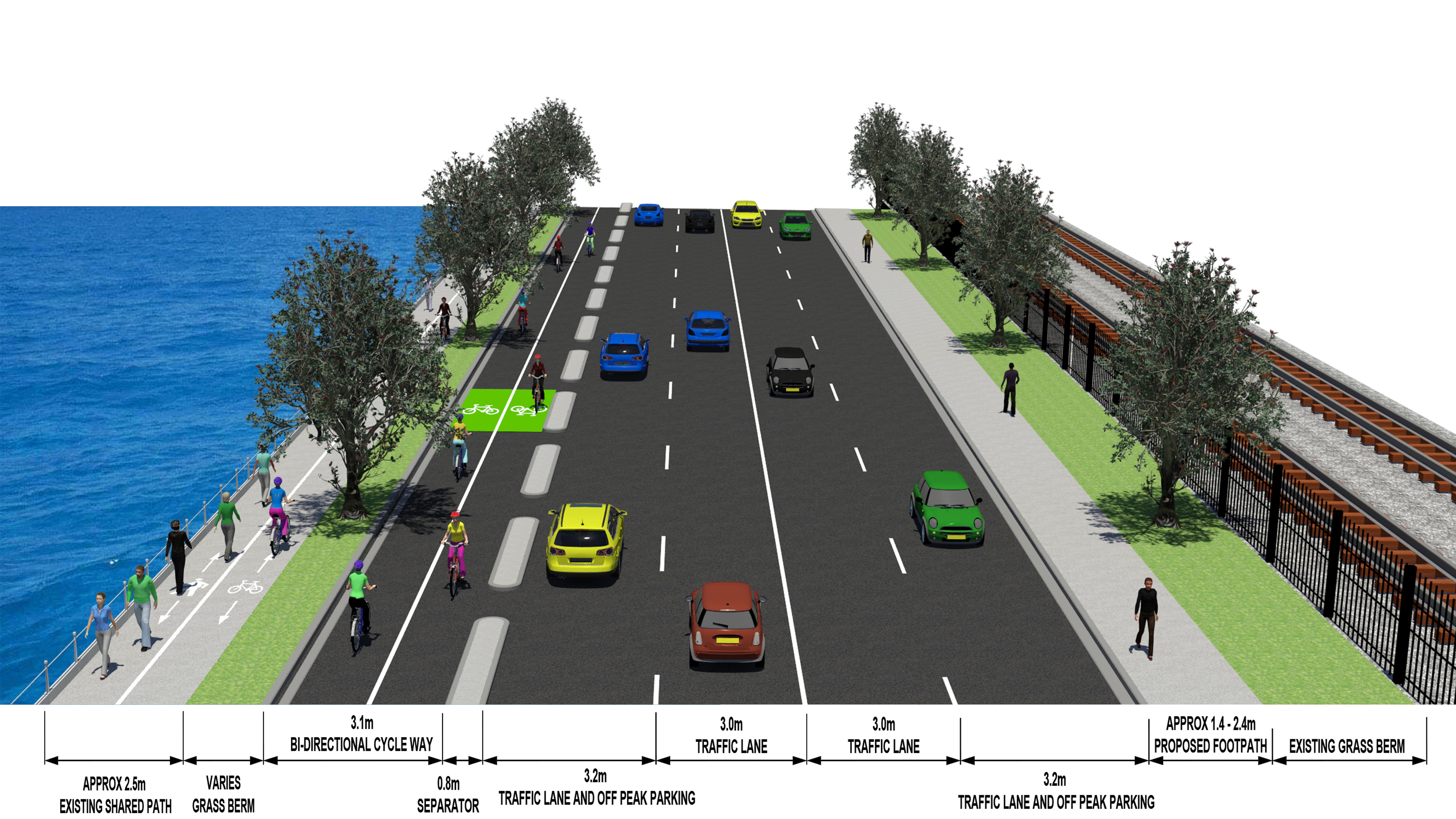
- Construction will start on the Ngapipi bridge clip-ons in winter 2019, when boating activity is at its lowest, and is expected to take three to six months. After it’s complete, there will be protected bikeways both sides of the bridge – one on the north for the two-way bikeway on Tamaki Drive, and on the south side, one aimed at the road riders – thus removing that current westbound pinch point/merge at Ngapipi.

So it’s all good, right?
Yes – and no. All three stages described above represent massive gains for people on bikes. The plans, which will deliver a fully protected cycleway all the way from the bottom of the city to Ngapipi Road, are light years ahead of what was originally proposed – and an absolute step change from what is there now.
There remains a one-word problem: parking.
This section of Tamaki Drive is extremely popular with road riders, solo and in groups, and even AT says it accepts that many, maybe even most, road riders will continue to use the road rather than the new cycleway when riding into the city. But AT’s plan retains on-street parking on both sides of Tamaki Drive west of Ngapipi Road, except for a clearway period during peak hours.
We think this is particularly problematic westbound. It will force road riders to share a single lane with motor traffic for all but two hours of the day – and this, in our view, puts those riders at unnecessary risk for the convenience of car drivers (who will, remember, still have the choice of parking on the north side of the road, as well as, for some uses, off-street parking in areas along Tamaki Drive).
Bike Auckland has consistently advocated for at least the parking spots on the south side to be permanently removed for the safety of on-road riders – we’ve held the line on this during the consultation, during workshops back in 2017, and again more recently.
AT has its own mind on this matter, however, and it appears to us that the organisation hasn’t yet progressed to the point of consistently prioritising safety over parking.
Based on surveys that show ‘parking demand’ on the south side of Tamaki Drive (particularly around the Parnell baths), AT wants to retain the option for people to park here outside peak hours, just like on the northern side. It also notes that during the public consultation it said parking would remain on the south side – despite the original plans showing it at least partly removed.
Bike Auckland will continue to push AT to take into account those riders who choose, as is their right, to head into the city on-road – and to do so safely, in a way that doesn’t expose them to aggressive drivers who might be offended by having to cross the centre line to overtake them.
While we understand that AT is looking at ways to emphasise that road riders are still permitted on the road (not via sharrows; those are ruled out), we know that not everyone will think that way, which is why narrowing the remaining road by keeping parking is not a great solution.
In the meantime, we’d like your feedback on the clearways. Is the current 7am to 9am a significant benefit to your safety? If not, for how long should the clearway operate?
Use the comments section to let us know what you think, and we’ll argue strongly for making the best of what currently is a pretty poor component of an otherwise excellent plan.


